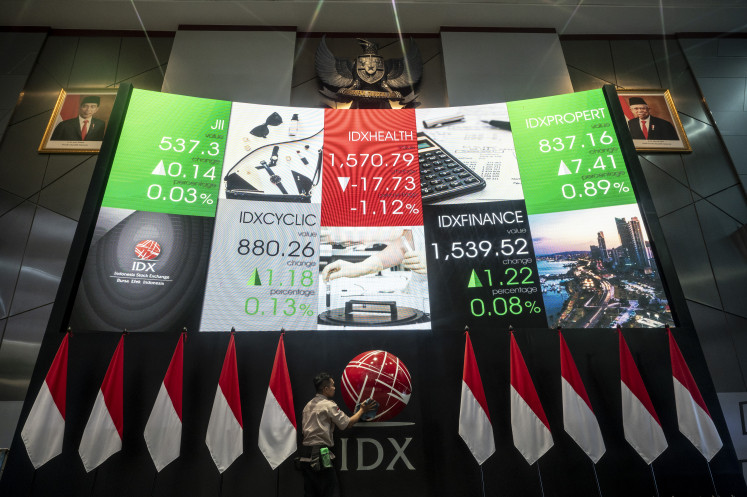Popular Reads
Top Results
Can't find what you're looking for?
View all search resultsPopular Reads
Top Results
Can't find what you're looking for?
View all search results‘Tidying Up with Marie Kondo’ Soothing, contemplative take on organizing clutter
Sparking joy: Marie Kondo's central tenet of decluttering hinges on whether one's material possessions “spark joy” or not
Change text size
Gift Premium Articles
to Anyone
Sparking joy: Marie Kondo's central tenet of decluttering hinges on whether one's material possessions “spark joy” or not.
Japanese decluttering guru, Marie Kondo, brings her skills to the stuffed-to-the-gills homes of American families in her hit Netflix show, Tidying Up with Marie Kondo.
If you are the kind of person who enjoys aesthetically pleasing rooms and owns a Pinterest board of decluttering life hacks, then you might be familiar with Marie Kondo and her world-famous KonMari method of tidying up.
For those of you who don’t know, Kondo founded her organizing consulting business at the age of 19 in Tokyo. Her business has become so successful that people are willing to wait for six months for one of her consultations.
Kondo accomplished global fame after one of her books, The Life-Changing Magic of Tidying Up: The Japanese Art of Decluttering and Organizing, was published in more than 30 countries and landed at number one on The New York Times’ best-selling books list. In 2015, Kondo made into TIME’s 100 most influential people list.
Based on book sales and the popularity of her US$2,000 KonMari certification seminars, it’s safe to say that Kondo has taken the world by storm and her latest project on Netflix shows her preaching the gospel of her trademarked KonMari method to American families.
Essentially, the KonMari method classifies one’s possessions into four categories: clothes, books, komono (miscellaneous items) and sentimental items.
In the show, the families are encouraged to lay out their belongings and keep those that “speak to the heart” and “spark joy”, discarding the others, but not before thanking them for their service.
On the surface, this setup seems familiar to other home makeover shows, such as Style Network’s now-cancelled Clean House, in which a team of professionals redecorated the homes of American families.
What makes Tidying Up different is that the show steers clear of bombastic production in favor of a gentle, mindful approach that seems, in a sense, to be uniquely Japanese.
Also, unlike the extreme hoarders who pop up in the news, Kondo’s subjects are regular, relatable people who accumulate things and don’t know how to let them go. The clutter in their homes often tells a story of their hidden problems: stress, grief or a busy modern life.
The first episode is about a couple with toddlers struggling to keep their playroom, kitchen and closets organized. Another episode shows Kondo guide a grieving widow to say goodbye to the belongings of her late husband.
Tidying Up also follows empty nesters Ron and Wendy, who fill the void left behind by their children moving out with assorted knick-knacks, including an obscenely large Christmas nutcracker collection.
Kondo does not suggest a new splash of paint for the walls or statement furniture. Instead, she invites the couple to reminisce through their heirlooms found under a pile of household garbage.
Another episode shows Kondo talking to newlywed Alishia, who hangs onto a dress from her late grandmother even though the dress does not fit her anymore.
“The point of this process isn’t to force yourself to eliminate things,” Kondo, speaking through an interpreter, assures Alishia.
“It’s really to confirm how you feel about each and every item that you possess.”
Mary Poppins of decluttering: Netflix hit series, Tidying Up with Marie Kondo, sees the Japanese decluttering guru visit the houses of American families. The series has sparked a trend, which sees people share photos of them folding clothes and reorganizing their closet using Kondo’s techniques.Perhaps this is the magic of Kondo’s KonMari method. You evaluate your own connection to each item you own and Kondo never feels like she is judging her subjects.
The show also indirectly tackles an American issue that’s slowly becoming depressingly common all over the world: rampant consumerism.
Oftentimes after Kondo asks the families to spread out the contents of their closets on top of the bed, they are surprised by the sheer number of clothes left unused, or even the ones they didn’t realize they have.
By keeping things you like the most and thanking each item for its service, you might think twice before going on a shopping spree.
In a sense, Tidying Up with Marie Kondo offers an introspective approach to decluttering just like her books, but it feels much more enjoyable when you can see how Kondo does spark joy in families through her simple methods.
Those who enjoy dramatic before-and-after comparisons would be disappointed, but this is not what this show is about. It is the simple, soothing joy of keeping meaningful things in your life.
Nevertheless, a word of advice to those wanting to try out the KonMari method: The shirt-folding technique is quite efficient and pleasing to the eye, but it works best if your wardrobe consists of drawers. My own wardrobe consists of shelves and it is not as pleasing when you have to use a chair just to look at the clothes on the top shelf.
Maybe it’s just me, but none of my current clothes spark joy and throwing them all out would probably bring me the opposite of joy.
Come to think of it, minimalism seems to be what Kondo is essentially espousing and perhaps some further tidying up is needed.











